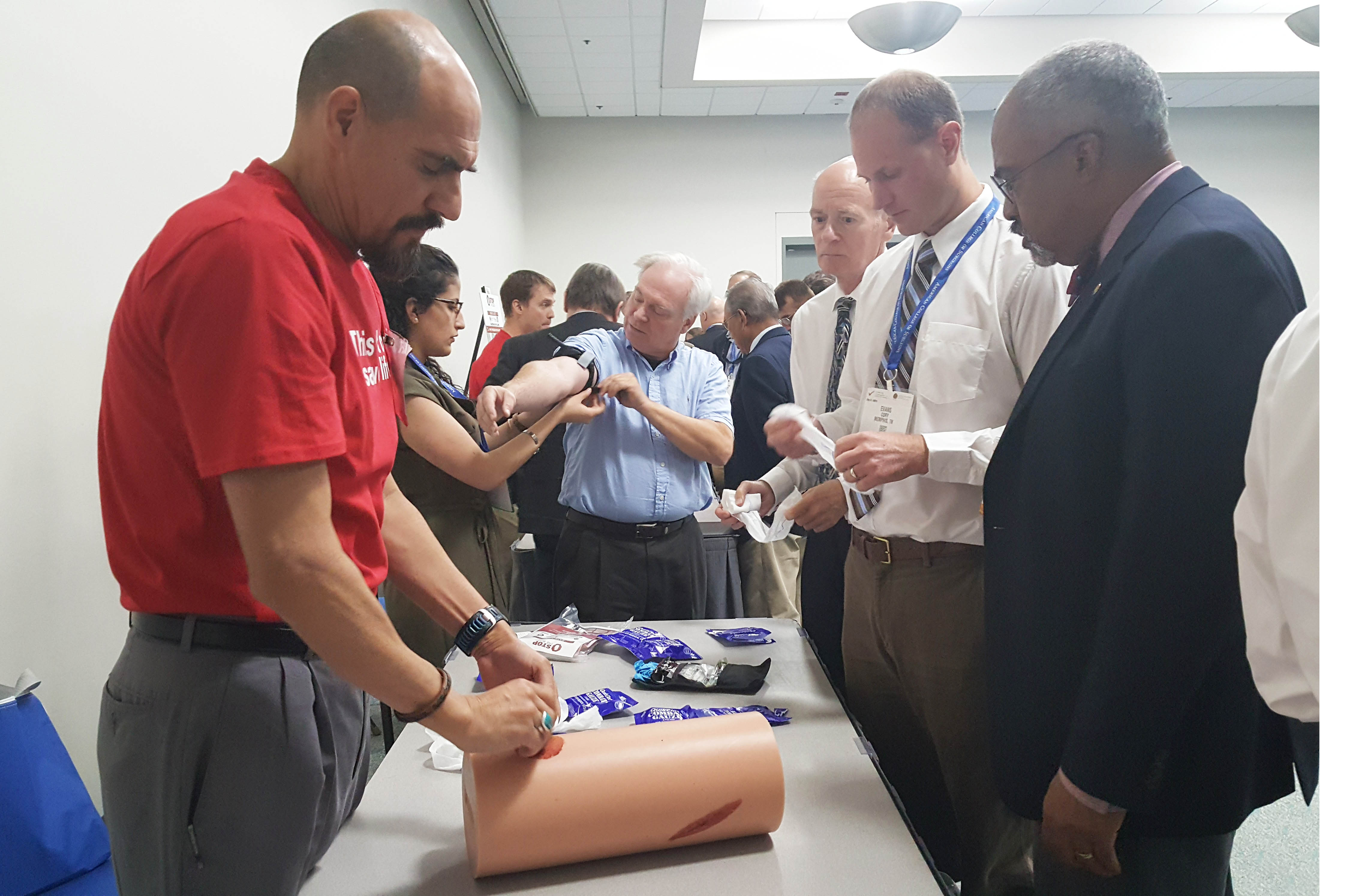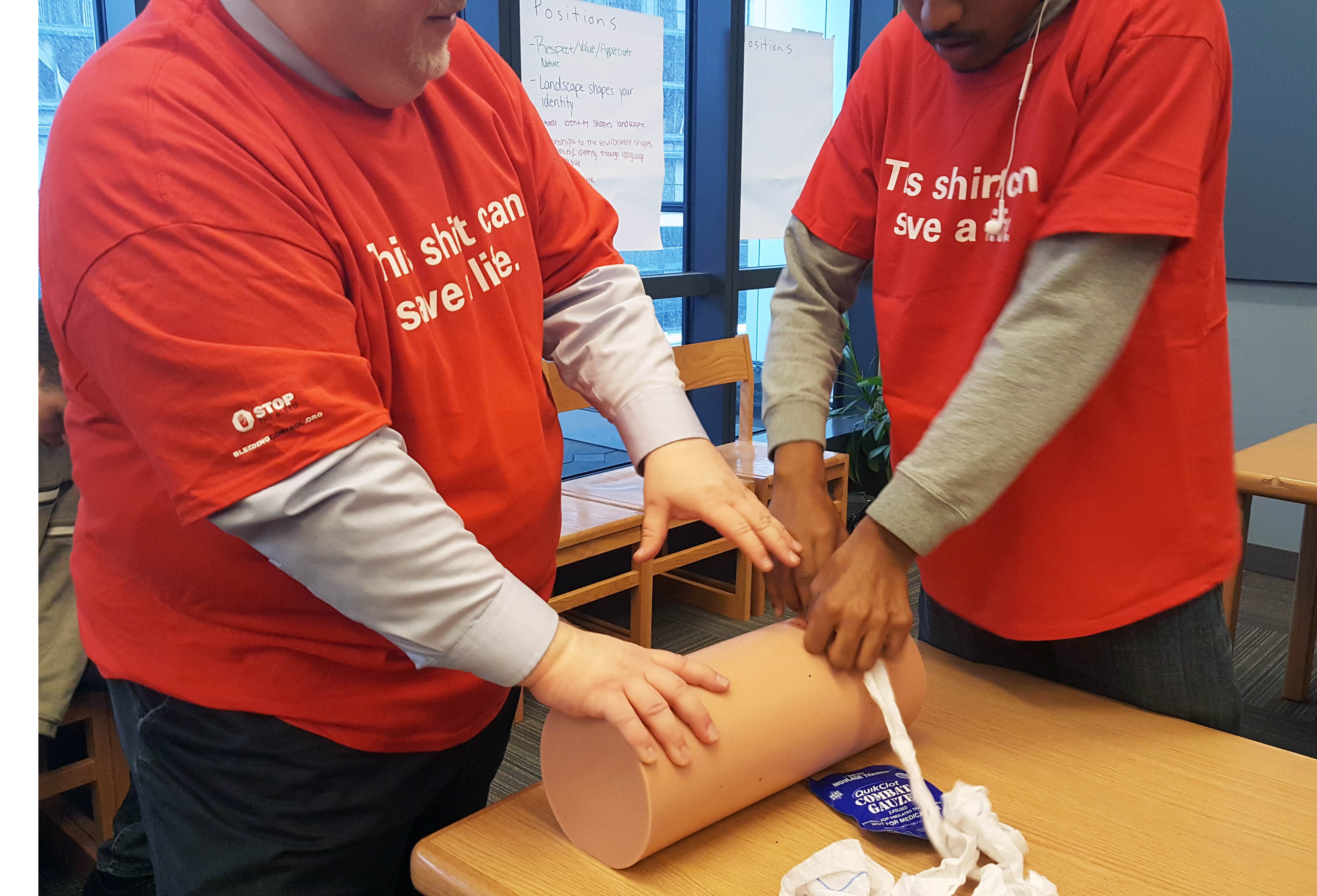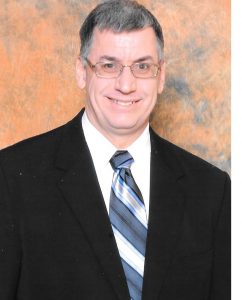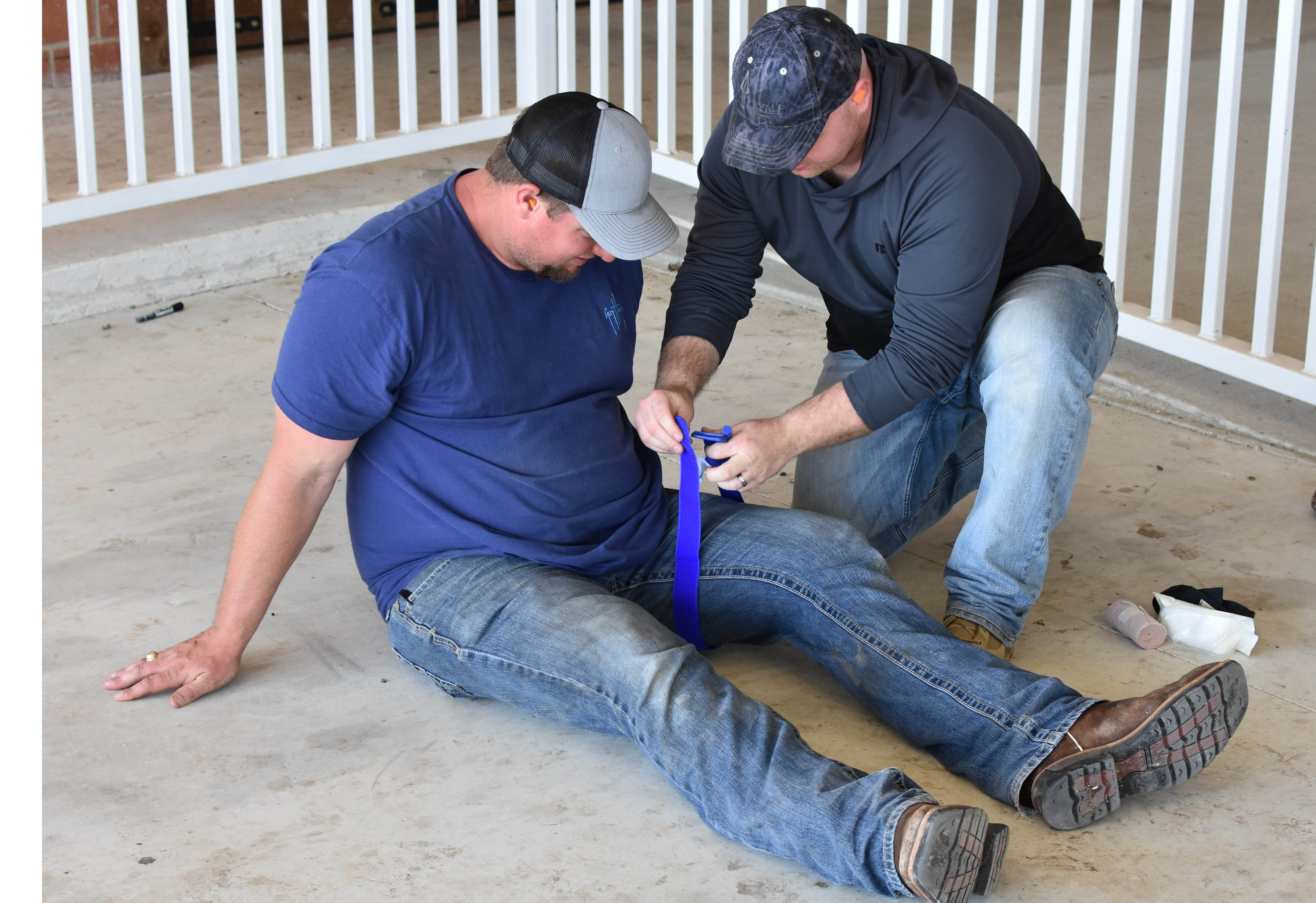PA Leads National Stop the Bleed Day
March 31st is Day for Advocacy and Training
February 28, 2018
By Jennifer Walker

In 2016, Major Andrew Fisher, MPAS, APA, PA-C, saw a National Academies of Sciences, Engineering, and Medicine study that found that up to 20 percent of U.S. trauma deaths could be prevented. This means that of the 147,790 U.S. trauma deaths in 2014—deaths resulting after physical injuries sustained from motor vehicle accidents, gunshot wounds, or falls, for example—as many as 30,000 of them could have been preventable with optimal trauma care. The challenge is that death due to bleeding after a traumatic injury can occur in five minutes or less, faster than medical teams can arrive to provide that care. This is where the public could play a massively important role: If trained, they could step in to control bleeding until trauma teams arrive.
Fisher had been involved for years with a bleeding control training program. As a PA with the 75th Ranger Regiment in Fort Benning, Georgia, from 2007 to 2016, he was part of a team that taught its more than 4,000 service members how to identify and treat life-threatening hemorrhage before patients arrive at a hospital. So, in 2016, when he started medical school at Texas A&M University’s College of Medicine in Bryan, Texas, Fisher became an instructor for the American College of Surgeons’ Stop the Bleed program, a free course that trains the public in how to stop bleeding following a traumatic injury. In this role, he has taught medical students, EMS teams, and the public.
Then, in 2017, wanting to do more to spread the word about the program, Fisher partnered with seven other combat medics and Stop the Bleed instructors to start an advocacy campaign called National Stop the Bleed Day. Using social media, the team encourages people to sign up for a Stop the Bleed course or to become an instructor and lead a course on a specific day. (The same team started a Facebook group called Next Generation Combat Medic, which has more than 36,000 likes and followers.) This year’s inaugural event is set to take place on March 31st.
“We’re not officially part of the Stop the Bleed program,” says Fisher, who is chairman of the event. “But we are advocating to get more instructors involved and to bring more people to the training so they can learn how to identify and treat life-threatening hemorrhage in the pre-hospital setting and help save lives.”

Photo courtesy of the American College of Surgeons
The Stop the Bleed program is launched
The Stop the Bleed program was created in response to the Sandy Hook shooting in Newtown, Connecticut, which took place on December 14, 2012. On that day, trauma surgeon Lenworth Jacobs, MD, MPH, FACS, was at Hartford Hospital, a Level I trauma center, when a call came in about the shooting. “A half an hour after that, we were told to stand down, which usually means there is no problem,” says Jacobs, who is also vice president of academic affairs and chief academic officer at Hartford Hospital. “And obviously, it was the total reverse.”
Jacobs quickly learned that 26 people were killed at Sandy Hook Elementary School that day, including 20 children between the ages of six and seven years old. Later, the medical examiner asked Jacobs to help review autopsies from the shooting. “In becoming involved in that, it’s a changing thing. To see six-year-old children…” Jacobs says, trailing off. “It’s not right.”
A week or two after the shooting, the Board of Regents of the American College of Surgeons, of which Jacobs is a member, had their regular meeting. It was decided that Jacobs would lead a multidisciplinary committee called the Hartford Consensus, which would focus on increasing survival rates from active shooter and intentional mass casualty events. (Since the Sandy Hook shooting, there have been at least 239 school shootings nationwide; in these incidents, 438 people have been shot and 138 were killed, according to The New York Times.) The committee included representatives from the White House; the National Security Council; the FBI; military, police, and fire organizations; and hospital and EMS groups. The team generated four reports, which concluded that no one should die from active hemorrhage.

Photo courtesy of the American College of Surgeons
Along with making recommendations that the police help stop bleeding if necessary and that EMS teams arrive on the scene sooner to provide care, it was found that the public can become actively involved with preventing death from uncontrollable bleeding. “The reality is that for the first five or 10 minutes [after a trauma injury], the person who is going to save you is the person right beside you,” Jacobs says.
The Stop the Bleed program was unveiled on October 6, 2015. Launched by the White House as an initiative of the American College of Surgeons, this course explains how to stop bleeding using three techniques: applying pressure, packing a wound, and using a tourniquet. “With those three things, you can at least hold the blood inside the body until more sophisticated care gets there,” says Jacobs, adding that the skills can be used to stop heavy bleeding from any injury. “What we want is for Stop the Bleed or hemorrhage control to be as common as CPR.”
Jacobs sees PAs as invaluable partners in spreading the word about Stop the Bleed, which has 12,000 instructors in 50 states, 500 instructors in 56 countries, and has trained more than 100,000 people. “Physician assistants are well revered by the public because they are trusted health care providers. So they become really significant flag bearers and advocates for this cause.”
PAs Take the Stop the Bleed Course

Craig Baumgartner, MBA, MPAS, PA-C, MPLC, DFAAPA, took the Stop the Bleed course in Chicago last October. He then became an instructor in the northern suburbs of the city, where he lives and where it had been difficult for him to find a class. “Not everybody knows about how to stop bleeding, so that’s why I got involved,” says Baumgartner, who is a PA in surgical services which include trauma, general, urology, vascular, orthopaedics and neurology at NorthShore University HealthSystem in Glenview, Illinois. “I think it’s good to be able to teach the class so people are aware of what to do.”
Baumgartner has taught the Stop the Bleed course—which lasts 45 minutes to an hour and is a combination of a PowerPoint presentation and skills practice—to trauma nurses at the National Meeting for the American College of Surgeons and to PAs at hospitals so they can become instructors. He was also part of a team of instructors that taught the course to about 60 sophomores and juniors at a high school. “The other instructors and I were talking before the class and wondering how they would react to the slides,” says Baumgartner, adding that some of the animated slides show blood spurting out. “We didn’t know if the kids would be freaked out by that. But they actually thought it was interesting. They liked the class.”
Stephanie Granvall, PA-C, took a Stop the Bleed course at the American College of Surgeons clinical conference that was geared toward healthcare professionals who want to become instructors. Granvall’s nephews, who are 14 and 12, are in the Boy Scouts, and she plans to teach them the Stop the Bleed techniques so they can pass those skills on to their community. “Sadly, in our society today, with all these mass casualty incidents, the lay public could help people survive a devastating injury should it occur if they knew how to do it appropriately and correctly,” says Granvall, who works in general surgery at Swedish Medical Center in Issaquah, Washington. “So I think the course has significant benefit for the public.”

National Stop the Bleed Day
To spread the word about National Stop the Bleed Day, Fisher and the team created a website that points people to www.bleedingcontrol.org, where they can sign up for classes or become an instructor. (Since PAs have a medical background, they only need to take the course to get approved to be an instructor.) They are also encouraging others to share pictures and stories about the training on Facebook and Instagram through the #NSTBD18 hashtag.
As of the end of February, Stop the Bleed Day—which Fisher is thinking of extending to a week- or month-long campaign next year—also had 38 confirmed state coordinators and six nominated coordinators who work to recruit students and instructors in their states. Although the official event is scheduled for March 31st, some state coordinators may choose to hold Stop the Bleed events a week earlier or later because of Spring Break and Easter and Passover holidays.
Fisher says that this advocacy campaign is all about augmenting what is being done by the American College of Surgeons and the Stop the Bleed program. “They do great work,” he says. “We just hope to help them out along the way by bringing better awareness to this program.”
Jennifer Walker is a freelance writer in Baltimore, MD. Contact Jennifer at [email protected].
Thank you for reading AAPA’s News Central
You have 2 articles left this month. Create a free account to read more stories, or become a member for more access to exclusive benefits! Already have an account? Log in.



